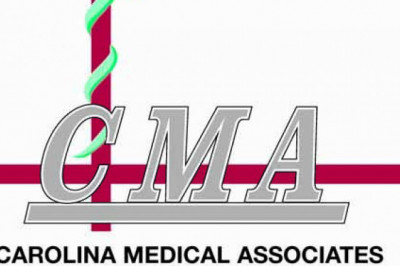views

Eligibility, Application, and Authorizations for CPT for International Students
In the United States, you can learn how to work or acquire an internship in your field of study.
At her employment, a female foreign student with a lanyard and ID smiles for the camera.
Are you looking for a job or an internship in the United States? International students can receive professional training experience in their industry through Curricular Practical Training (CPT) while studying in the United States. International students can work full- or part-time internships, work/study positions, or other roles with CPT as long as the training takes place before the programme ends, is relevant to their course of study, and meets a few other CPT work authorization conditions. Continue reading to find out more.
Curricular Practical Training (CPT) is a term that refers to training that takes place outside of the classroom.
CPT is one of two types of practical training available to F-1 student visa holders while in the United States. (Optional Practical Training, or OPT, is the other type.) Practical training can take the form of an internship or even a paid employment in your field of study. CPT allows you to gain the kinds of hands-on experience that are crucial while deciding on a career path.
There are some rules that apply to both types of practical instruction. If you're applying for CPT or OPT, for example, you can't be studying English as a second language right now. The most crucial thing to keep in mind is that CPT must occur prior to graduation or completion of your degree. OPT, on the other hand, can happen before or after you finish your programme.
The following qualifications, according to the United States Department of Homeland Security — DHS.gov — assist define Curricular Practical Training:
-
Training is directly related to your major.
-
Your program's curriculum must include training.
-
Your CPT is authorized in SEVIS by your Designated School Official (DSO), who also updates your official I-20 form.
-
CPT occurs before the completion of your programme as stated on your I-20 form.
-
Each CPT work authorization is only valid for a certain company and for a limited time.
-
Before CPT can be allowed, you must have a training opportunity offer.
-
Before you can start working, your CPT must be formally confirmed.
-
At any given time, you can have multiple CPT work authorizations.
-
Your OPT eligibility is revoked after one year of full-time CPT.
What is the duration of CPT for international students?
Your training must end by the end date on your form I-20, according to CPT international student visa rules. In other words, you can continue to receive CPT benefits as long as you are enrolled full-time in your programme and actively working toward your degree. You can hold numerous CPT positions, even more than one at a time; but, you will not be eligible for OPT if you have worked for more than 12 months on CPT.
With CPT authorization, you can work full-time as an F-1 visa holder. Full-time CPT or part-time CPT must be chosen by students. Students who choose full-time CPT can work up to 40 hours per week, while part-time CPT students can work up to 20 hours per week. Make sure you understand your alternatives before making a decision that could influence your ability to qualify for OPT after graduation.
Who Qualifies for CPT?
To study in the United States as an F-1 student CPT visa holder, you must complete the following requirements:
-
Your university has received SEVP certification.
-
You are a full-time student who has been enrolled for at least one year.
-
You are not a second-language learner of English.
-
You've already been offered an internship or a job.
If you meet these requirements, you should be eligible for CPT and be able to apply for a CPT visa in the United States.
Application for a CPT
The first step in applying for CPT is to obtain a job offer letter from your desired company. Make sure your letter is signed and printed on your employer's official letterhead. The following information must also be included in the letter:
-
Your name
-
Job title
-
Job description
-
Address of employment
-
Start and end dates of your CPT employment
-
Whether you are working full time or part time
You can start the CPT work permission and CPT visa application procedure with your university-appointed DSO once you get the letter from your employer. Your DSO will make the necessary changes to your I-20 and send you a new copy with your amended CPT status.
Many students and officials argue that obtaining CPT is easier and takes less time than obtaining OPT because CPT international student rules just demand a meeting with your DSO and because CPT is generally a scheduled part of a degree programme. However, it is always a good idea to plan ahead. Before you begin the CPT international student application process, speak with your university's DSO so you know what to expect when you're ready to apply for CPT.
Authorization for CPT
Your DSO will write a CPT international student authorisation notation on page three of your I-20 once you are eligible for CPT F-1 visa status. Keep in mind that your CPT work authorization is only valid for one employer, for a limited time, and at one specific location. This information is included in your authorization details on page three, as it relates to your position. To keep your CPT eligibility, you must follow certain job standards. If you see an error or have any questions, you must see your DSO as soon as possible.
Job Requirements for CPT Students
While studying at a university in the United States, there are numerous ways to apply for and use a CPT visa. Professional development options are included in the syllabi of some schools, such as Adelphi University's Global MBA programme. Look for US university departments that can fit with CPT foreign student opportunities when you begin your degree programme research.
You must train as part of your curriculum to meet CPT foreign student criteria. For example, as a requirement for graduation, you may be required to do an internship in your field of study. Furthermore, the training must be relevant to the field of study in which you intend to major.
If you get a work-study job in engineering but are studying for an English degree, you won't be eligible for CPT. While the government states you can work full- or part-time, your school may have a policy limiting how much you can work per semester or while taking a full course load. Before committing to a position, it's critical that you understand your school's policies.
If you're looking for internship and job options following graduation, OPT may be a better option than CPT.
Have questions about CPT requirements for international students, CPT eligibility, or the CPT visa application process? Our knowledgeable counselors can assist you. So get in touch with us today and let us help you move faster on your path to success.












